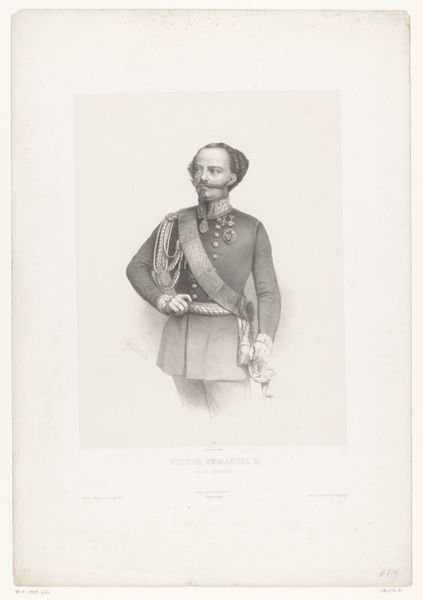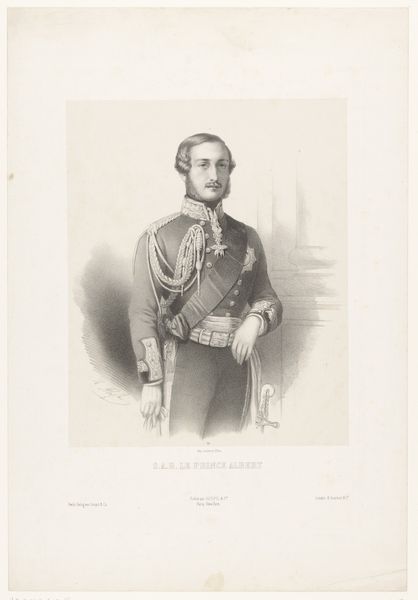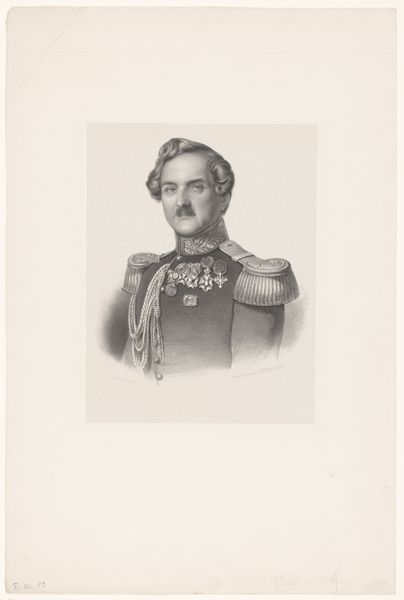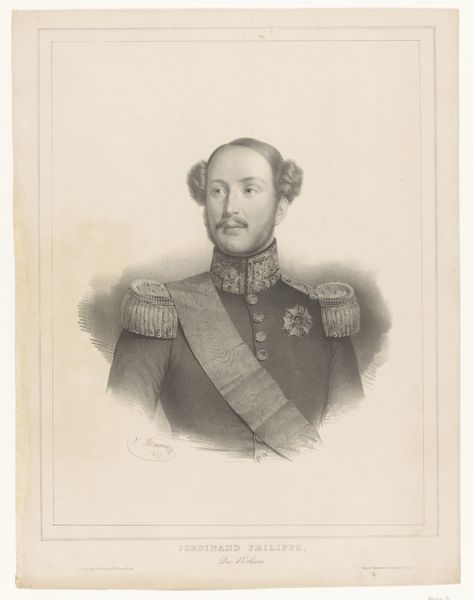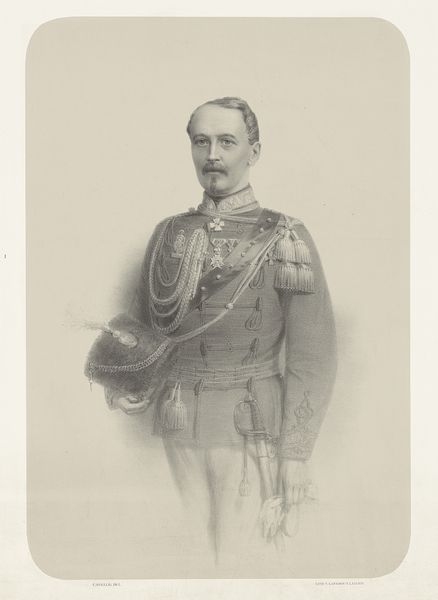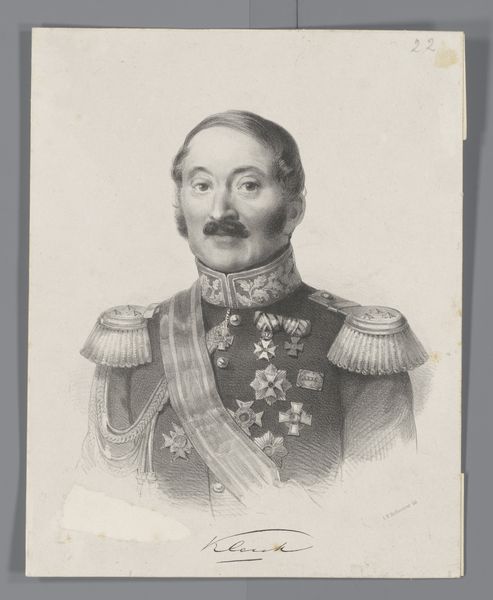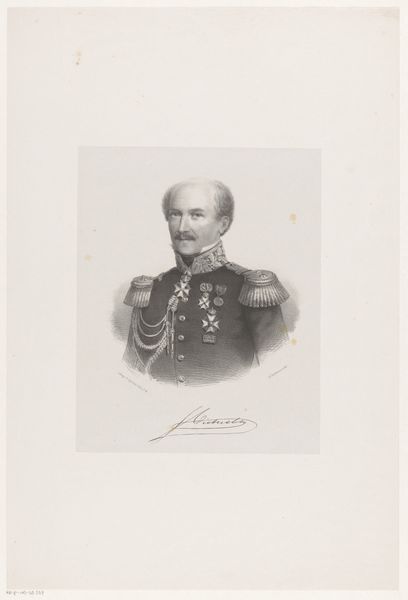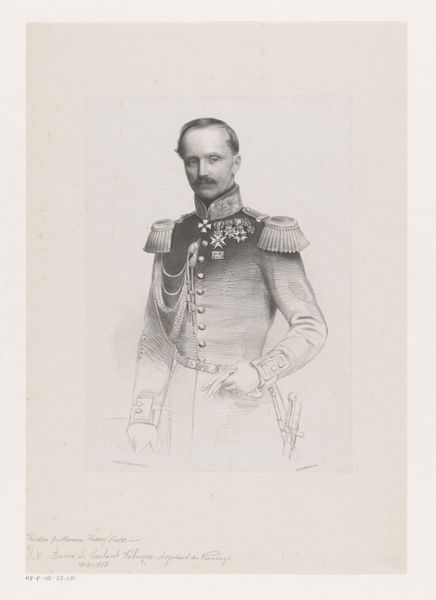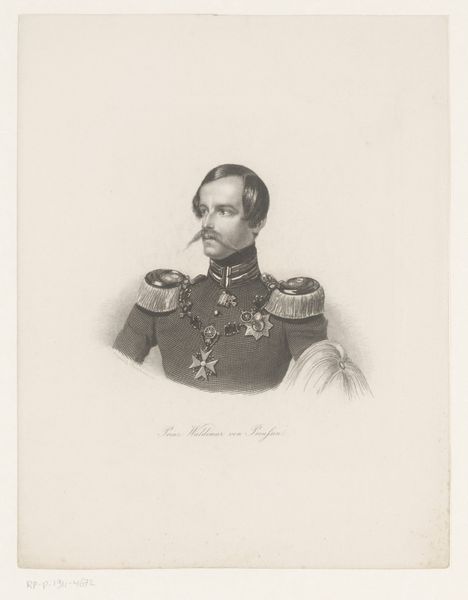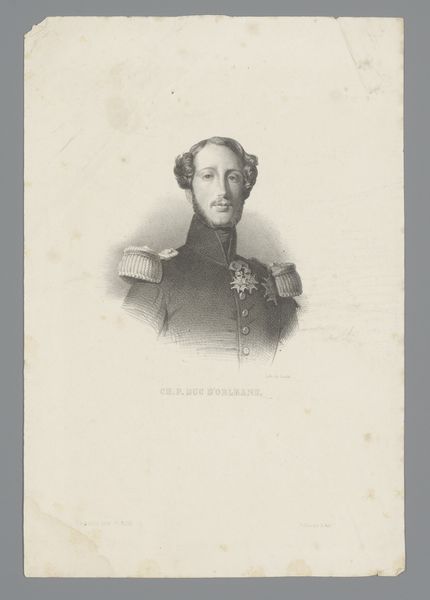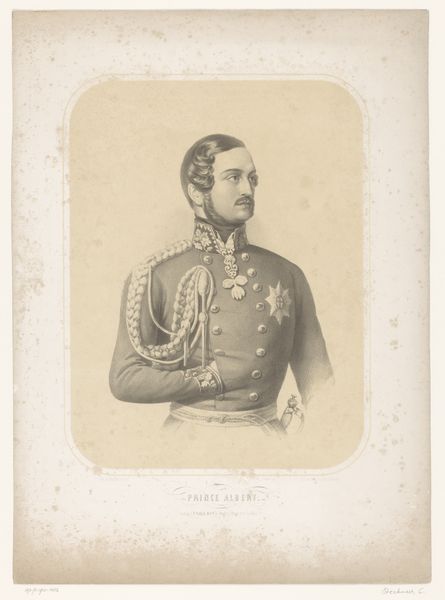
lithograph, print
#
portrait
#
lithograph
# print
#
romanticism
Dimensions: 397 mm (height) x 310 mm (width) (bladmaal)
Curator: Here we have a lithograph portrait from the 1840s, now held at the SMK, Statens Museum for Kunst. The work is titled "Gottlob Thevis Winning," and was made by Emil Ditlev Bærentzen. Editor: There’s an imposing, confident presence to this figure. The level of detail is captivating—his uniform practically glitters, even in a print. It feels like a direct window into a bygone era of military bravado and aristocratic power. Curator: Indeed. Consider lithography as a medium—how it democratized image production. Prints like this allowed for broader dissemination of power symbols. Each tassel and braid signifies status, yet the process renders the image accessible. The material realities of making, consuming, and distributing this image were key. Editor: Those ornaments and braiding work together in a language of status and aspiration, quite separate from the man. Look at the arrangement of these symbols, like the shoulder cords, their density speaks volumes. It tells us what mattered at the time, how worth was measured and visually communicated. It’s not merely documentation but social and cultural projection. Curator: Absolutely, we see the labor invested in both the physical creation of the military garment and the artistic process of translation into print. Furthermore, its dissemination highlights new possibilities with reproductive print technologies and their effects. Editor: And think about what the portrait is meant to communicate beyond pure likeness. It is enshrining this man through recognizable, symbolic devices to ensure not only the preservation of likeness, but the legacy and its intended implications for generations to come. Curator: And while we see the subject clearly, a man in uniform, what that uniform *meant* in the societal matrix— the implications for how people saw it and saw *themselves* because of its power -- is key to this conversation, too. Editor: Agreed. These romantic-era portraits invite viewers to see reflections of values that society once championed—ideas and symbols ripe for critical discussion, given their connection to privilege and influence. Curator: Thinking about lithography as both art and craft helps me recontextualize its importance within art history. Editor: And by exploring the visual language presented here, we deepen our understanding of what those markers of achievement signified then… and still evoke, today.
Comments
No comments
Be the first to comment and join the conversation on the ultimate creative platform.
